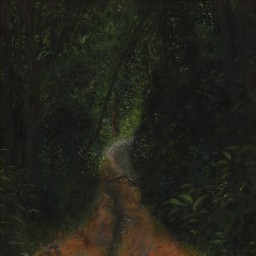 Review by Sonny for Kaatayra - Toda história pela frente (2020)
Review by Sonny for Kaatayra - Toda história pela frente (2020)
Kaatayra is one of the solo projects of brazilian multi-instrumentalist Caio Lemos who released his debut under the name in 2019 and went on to release 5 full-length albums in two and a half years. "Toda história pela frente" ("All History Ahead") is the fourth of these, being released in August 2020. Kaatayra plays atmospheric black metal infused with Caio's native brazilian folk music that makes for a refreshing change and adds a nice twist to the genre, bringing a different aesthetic to the music away from the euro-centric folk most usually encountered within the genre. Gone are the frigid, icy soundscapes more readily associated with european and north american black metal, to be replaced by a warmer, more celebratory atmosphere, where the natural environment is not so much a hard and inhospitable setting which must be endured, but a life-giving and nurturing domain that is to be acclaimed.
"Toda história pela frente" consists of three lengthy epics and was Kaatayra's most black metal album up to that point. I also think it was the album where he best integrated the black metal and acoustic elements together, with a noticeble increase in consistency as his songwriting matured. Not that I am saying there was too much wrong with his previous albums, but there was sometimes a jarring feeling that the two disparate elements were being forced together rather than the tracks evolving the relationship between the metal and the folk-led in a more organic way as they do here. Sometimes he takes a completely fresh approach to black metal and even plays the riff on acoustic rather than electric guitar, complete with accompanying blastbeats which works surprisingly well. Elsewhere he weaves some nice synth-led ambient threads into his musical tapestries, with an especially soothing section coming in the latter part of opening track, the 17-minute, "O Castigo Vem à Cavalo", giving the listener a moment or two of calm which lends an even greater impact to the final climactic blackened explosion.
When Caio let's the black metal side of things rip, then he sounds more savage and visceral than he had at any point up until this, with his ragged shrieks, frantic tremolo riffing and pummelling blastbeats providing an aggressive, red-blooded assault on the listener's ears with the opening minutes of second track "Toda mágoa do mundo" being the prime example. Yet, despite this, there is a rhythmic quality to the riffs on even the most vicious sections that prevents the tracks from sounding spiteful or hate-filled, but rather impart the notion of a more wholesome "nature red in tooth and claw" ethos instead. The latin rhythms of the folk-led parts are also one of the major distinctions between this and the vast majority of the atmospheric black metal pack. The euro-centric folk incorporated by most black metal acts oftentimes gives a menacing, ritualistic and even occult vibe to proceedings, but the dance-oriented latin rhythms deployed here make for a much more positive and celebratory atmosphere.
I don't think I can give this more praise than saying that, in certain respects, it reminds me of Austin Lunn's Panopticon. Similar to Panopticon it has taken the local folk music of the artist that sits outside the scope of black metal that we are used to and has incorporated it in such a way as to impart a different, more positive and human ethos into what can so often be a misanthropic and negative style of music, giving the listener an entirely different experience of black metal than they may have expected.
